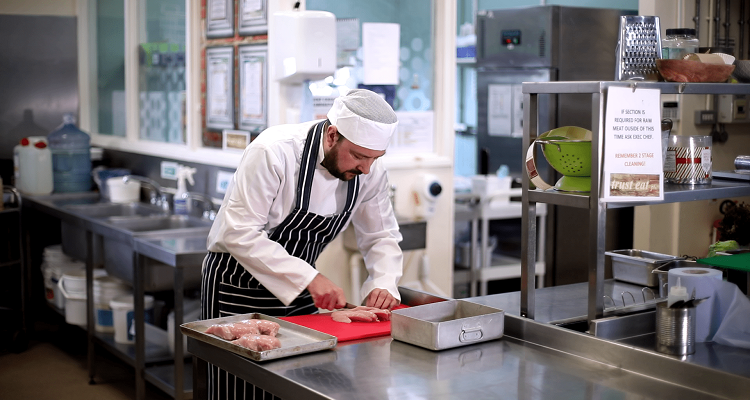When you consider food hygiene courses you should think of these ten elements:
- Effective hand washing.
- Clean premises.
- Chilling foods promptly.
- Cooking food adequately.
- Pest control.
- Sickness at work.
- Keeping equipment separate.
- Cross contamination.
- Storage and display of chilled items.
- Reheating food.
Bad hand washing is a leading culprit of food hygiene issues so it is vital to set aside cynicism and take note of the Food Standards Agency’s food hygiene training.
Many people think they wash their hands thoroughly with soap and water and then turn the tap off with their hand…the tap is contaminated!! Taps should be turned off using the sheet of tissue/kitchen paper that you use to dry your hands before you throw it away.
A sneeze is just a sneeze and you just sneezed in to your hands, no harm done. Or is there? That sneeze contained bacteria which will be passed from your hands to whatever you are working with. No menu says “chicken salad sandwich with free bacteria” but that’s what the customer will get. Wash hands after sneezing or coughing even if you don’t have a cold.
When you put the rubbish out, remove containers and fill the recycling boxes do you always wash your hands before returning to any food related tasks? If not, then our old friend bacteria are your unwanted work colleague and yes, it means another hand wash but this saves on food poisoning so it is an imperative action.
Cross contamination is a high risk cause of food poisoning. Very few people would happily eat raw meat but by cross contamination people can do just that even if they asked for a salad when the same equipment is used for both products. The juices from one food type transfer to others which spreads harmful bacteria. Using the same knife or cutting board for meat and produce is easy but has dire consequences.
- Do you know where to store meat, fish and poultry in the fridge?
- How do you store eggs?
- Does how you transport the food matter?
The brief answers are:
- You need to store meat, fish and poultry in the bottom of the fridge and in a sealed container or plastic bag. This means juices won’t leak or drip on to food on lower shelves.
- Eggs need to be stored in their egg box on a fridge shelf not in the door.
- Separate fresh, frozen, raw and refrigerated goods when shopping and transporting items. Don’t place them in the boot because they will be safer on the back seat of the vehicle.
If you have any doubts about food hygiene and safety then you need to refresh your knowledge with food hygiene courses, either in the classroom or online via e-learning courses.
Food hygiene courses are quick and convenient and training can be delivered on site, there’s no excuse for ignoring such a vital part of how you should be operating.















Comments